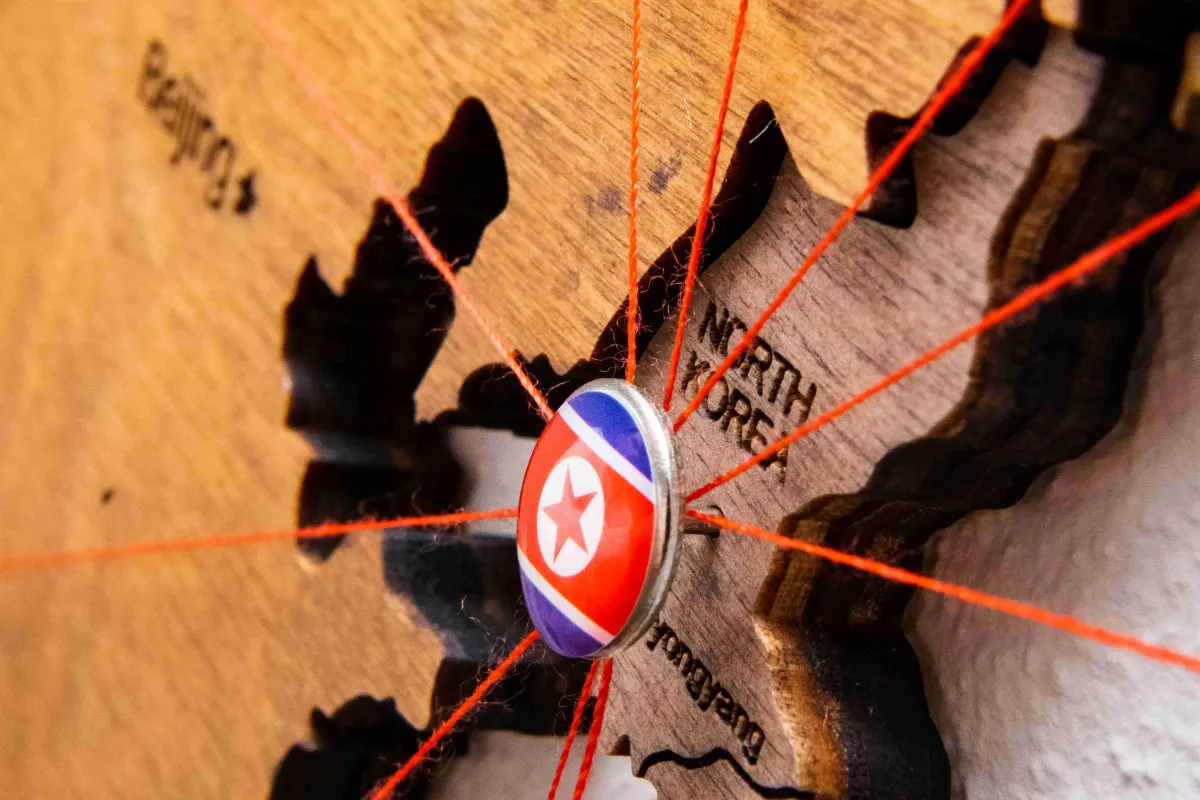Intelligence Insights
Welcome to the Open Mind Intelligence Insights Blog.
Expert Analysis from Professor Julian Richards.

Are North Korean arms getting to Ukraine?
Are North Korean arms getting to Ukraine?
In the late Summer of 2023, a visit to North Korea by former Russian defence minister, Sergei Shoigu, appeared to lay the groundwork for a major arms transfer deal between the two countries. Just a few weeks after the visit, Russian vessels were spotted transporting what was suspected to be large supplies of munitions from North Korea to a military port on the eastern coast of Russia. Subsequent intelligence from the US, UK and South Korea has robustly accused both parties of covertly transferring substantial numbers of munitions and ammunition to fuel Russia’s ongoing conflict in Ukraine. This is happening despite strenuous sanctions against both North Korea and Russia. Both have vehemently denied the accusations.
Satellite imagery intelligence was released in early Autumn 2023, and published online by the Royal United Services Institute (RUSI) in the UK: a military think tank associated with the UK’s Ministry of Defence. The imagery appeared to show a number of voyages by three Russian vessels, Angara, Maria and Lady R, departing the North Korean port of Rajin and unloading their cargoes at the secretive Russian military port of Dunai on the Pacific coast. All of these vessels were previously indicted under US sanctions imposed in 2022, for shipping illegal arms to various locations including Syria. During the 2023 shipments from North Korea, the vessels took the unusual step of turning off their AIS transponders, to frustrate surveillance. What appeared to be the same containers unloaded at Dunai were later spotted being transported by rail across Russia, to the city of Tikhoretsk, close to the border with Ukraine and Crimea. Satellite imagery has also observed substantial work being undertaken at a large ammunition’s depot at Tikhoretsk. It is assessed this is to upgrade the facility for the receipt of substantial flows of arms and munitions from North Korea. Although the contents of the shipped containers have not been fully evaluated, by October of last year, the US government was sufficiently sure of its intelligence to formally accuse North Korea of supplying large scale shipments of arms to Russia for its campaign in Ukraine, in contravention of arms control agreements.
By February 2024, South Korean officials were claiming that just short of 7000 containers of munitions had been shipped from North Korea to Russia since the agreement between the two countries the previous year. The intelligence was still not certain of the precise contents of the shipped containers, but suggested they likely contained several million artillery shells and ammunition rounds. Further intelligence has spotted major movements of rice, flour and oil in the opposite direction from Russia to North Korea. It is also strongly suspected that raw materials for manufacturing arms and key components in North Korea are part of the trade.
At around the same time, Ukrainian weapons inspectors were carrying out a detailed analysis of an unusual missile that had hit the Ukrainian city of Kharkiv: the location of a major Russian offensive in the east of Ukraine. The analysis eventually identified Korean writing on fragments of the missile. It concluded that this was the first known instance of a North Korean Hwasong II cruise missile appearing in Ukraine: a missile capable of travelling distances of 700 km.
What are the implications of what now appears to be a substantial deal with North Korea to fuel and sustain the Russian ground offensive in Ukraine? The assessments are mixed.
It is particularly worrying that the fragments of the Kharkiv missile analysed in early 2024 included Western computer chips and components, with some of them showing date stamps of just one year before. The implications of this are potentially very serious. What this shows is that, between them, Russia and North Korea are able to circumvent the raft of punitive sanctions aimed at frustrating their weapons programmes, to obtain the high-tech components they so badly need. Intelligence has suggested that such a trade is made possible through a highly complex international network of front companies and fake businesses, with components being smuggled through central Asia and the port of Hong Kong.
At its bleakest assessment, this means that sanctions demonstrably do not work in dealing with a problem like North Korea.
And yet, an alternative reading is much less favourable for Moscow and Pyongyang. The missile fragments in Kharkiv show that, while the North Korean ballistic missile programme is developing apace, it is still critically reliant on key Western components. It is very hard to control the flow of computer chips, not least as those that can be used in missile technology are dual-use, deployed in a range of other commercially available technology, from cars to refrigerators. Billions of them are produced every year and exported to all corners of the earth. However, discovering this ongoing dependency means that efforts can focus afresh on frustrating this particular element of arms development in Russia and North Korea.
It is also the case that a renewed source of frontline ammunition and artillery potentially provides Russia with a long-term attritional advantage over the much smaller Ukraine. Indeed, the Ukrainians have already been suffering from relative shortages of munitions, handing a tactical advantage to their foes. With shared borders and covert shipment channels, the deadly collaboration between Moscow and Pyongyang could be long, deep and mutually advantageous in shaping the world order.
Political events are also deeply worrying for Ukraine. The most important, of course, is the increasing likelihood of a second Trump presidency in the US, for whom supporting the ongoing supply of arms to Ukraine is very unpopular.
However, reports are starting to emerge at the time of writing that Russia’s advance into Ukraine is far from being as effective as feared would be the case with the completion of the arms transfer deal with North Korea. The offensive against Kharkiv appears to have stalled. Progress in other parts of the frontline is minimal. The “meat grinder” approach of attempting to overwhelm Ukrainian defences with primitive frontal assaults continues, with several supports suggesting troops recruited from Africa are forming a major element of the cannon fodder. But the overall results for Moscow appear to be very disappointing.
In the meantime, while Russia’s stocks of military capability are considerably larger than Ukraine’s, they are not limitless. There are some suggestions starting to emerge that the stocks of ex-Soviet capabilities in such areas as battle tanks are starting to approach exhaustion. This is not least as the Russian tactical approach in Ukraine has seen enormous losses of equipment and men. The North Korean supply line will be very significant in fuelling an almost bottomless source of basic arms and ammunition, but – at least in the short term – the sorts of high-tech capabilities needed such as tanks and aircraft are not things at which the North Koreans can supply.
In answer to the question as to whether North Korean arms are getting to Ukraine, therefore, the answer is almost certainly yes. But the implications of this for effecting a step-change in the conflict appear to be mixed. There is much about which we need to worry from a Western perspective. But where there is adversity, there is always opportunity. Efforts to further understand how the arms transfers happen and how they can be effectively frustrated will now need to double-down.
For any issues with our products please contact us at the following email address: [email protected]
© 2024 Kybacor LTD All Rights Reserved
Open Mind Intelligence Training and openmindtraining.io are trading names of Kybacor LTD
Company Number 12961490
Kybacor LTD
Whiteleaf Business Centre,
11 Little Balmer,
Buckingham, England,
MK18 1TF

